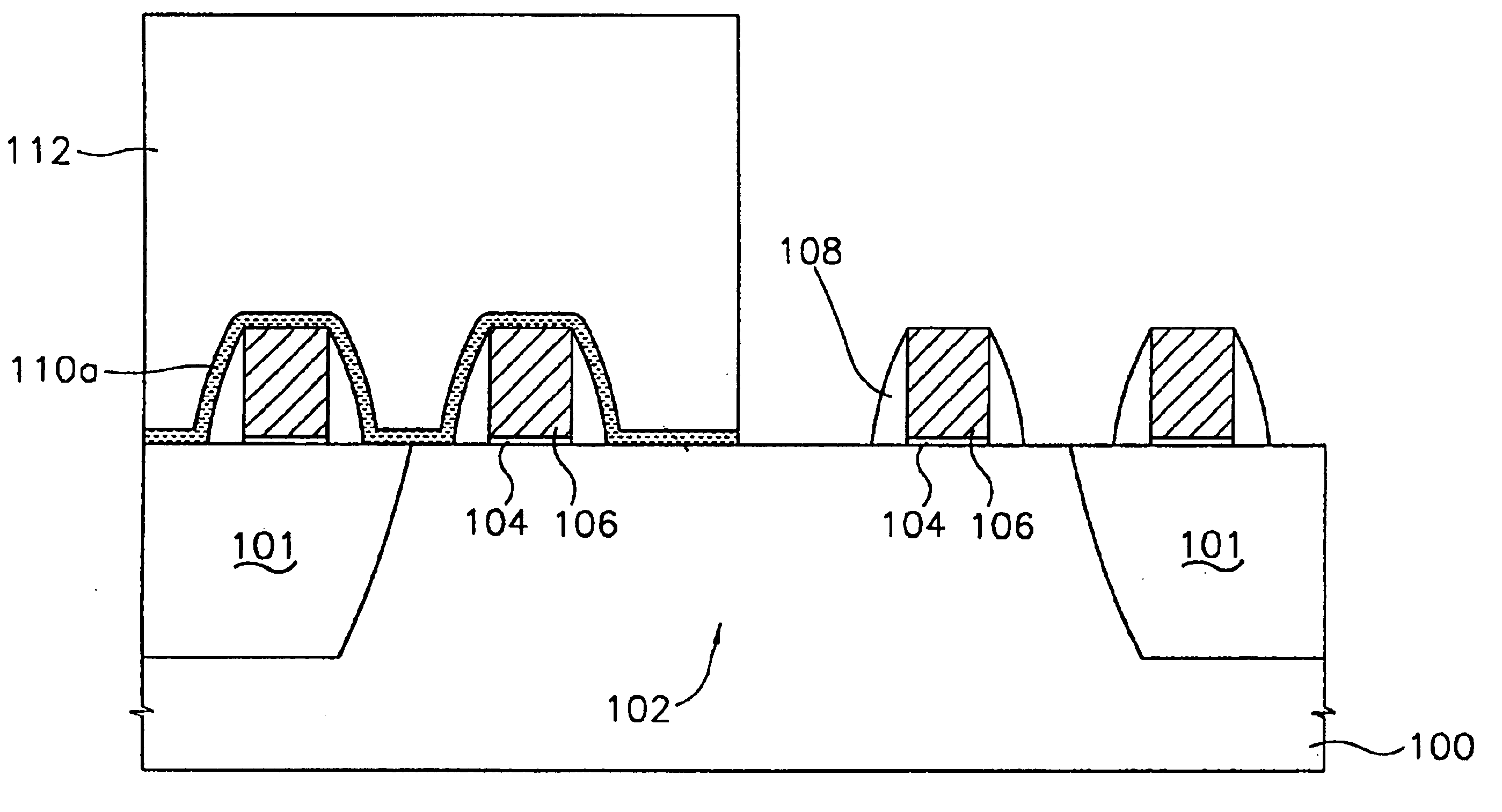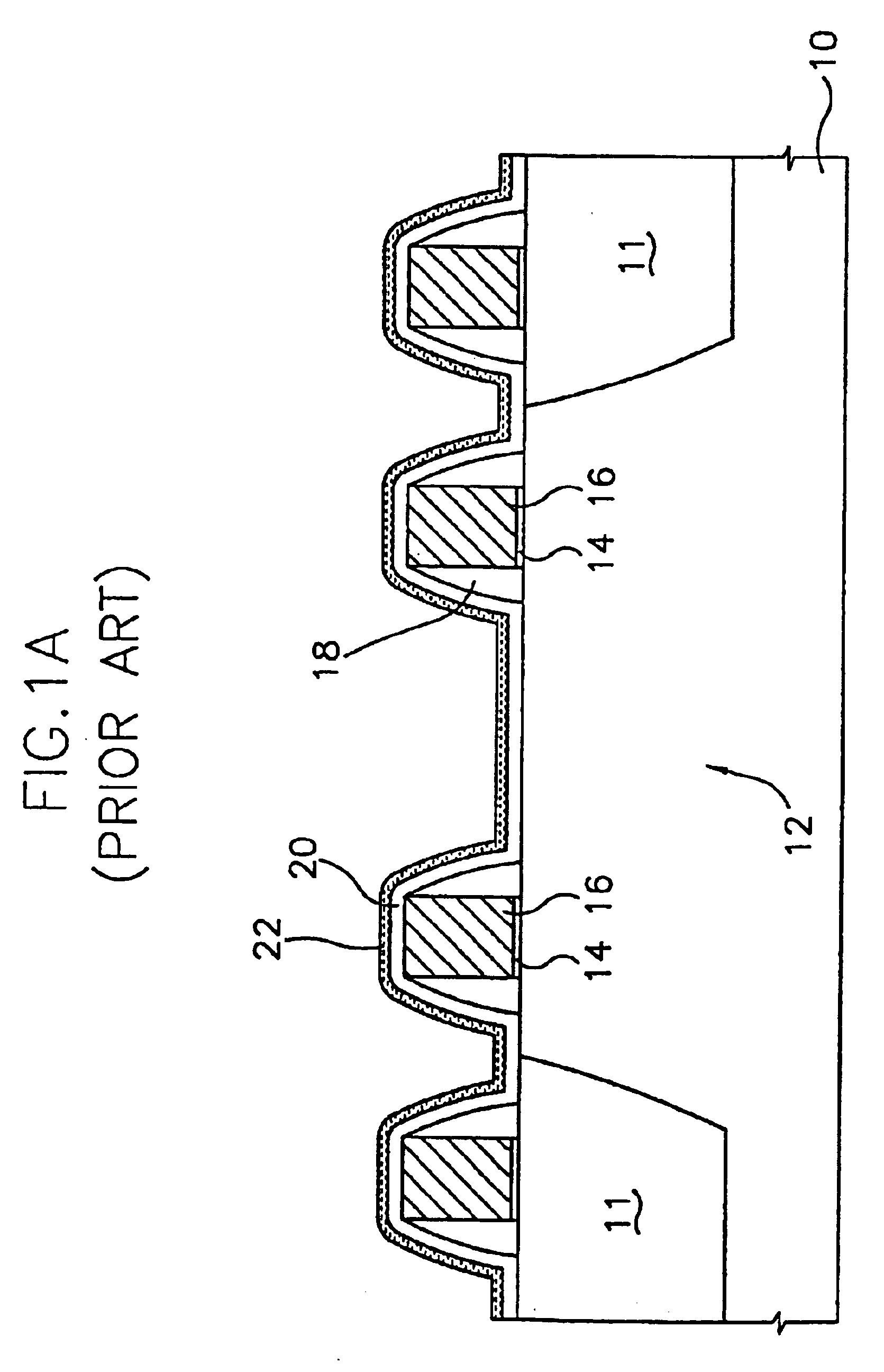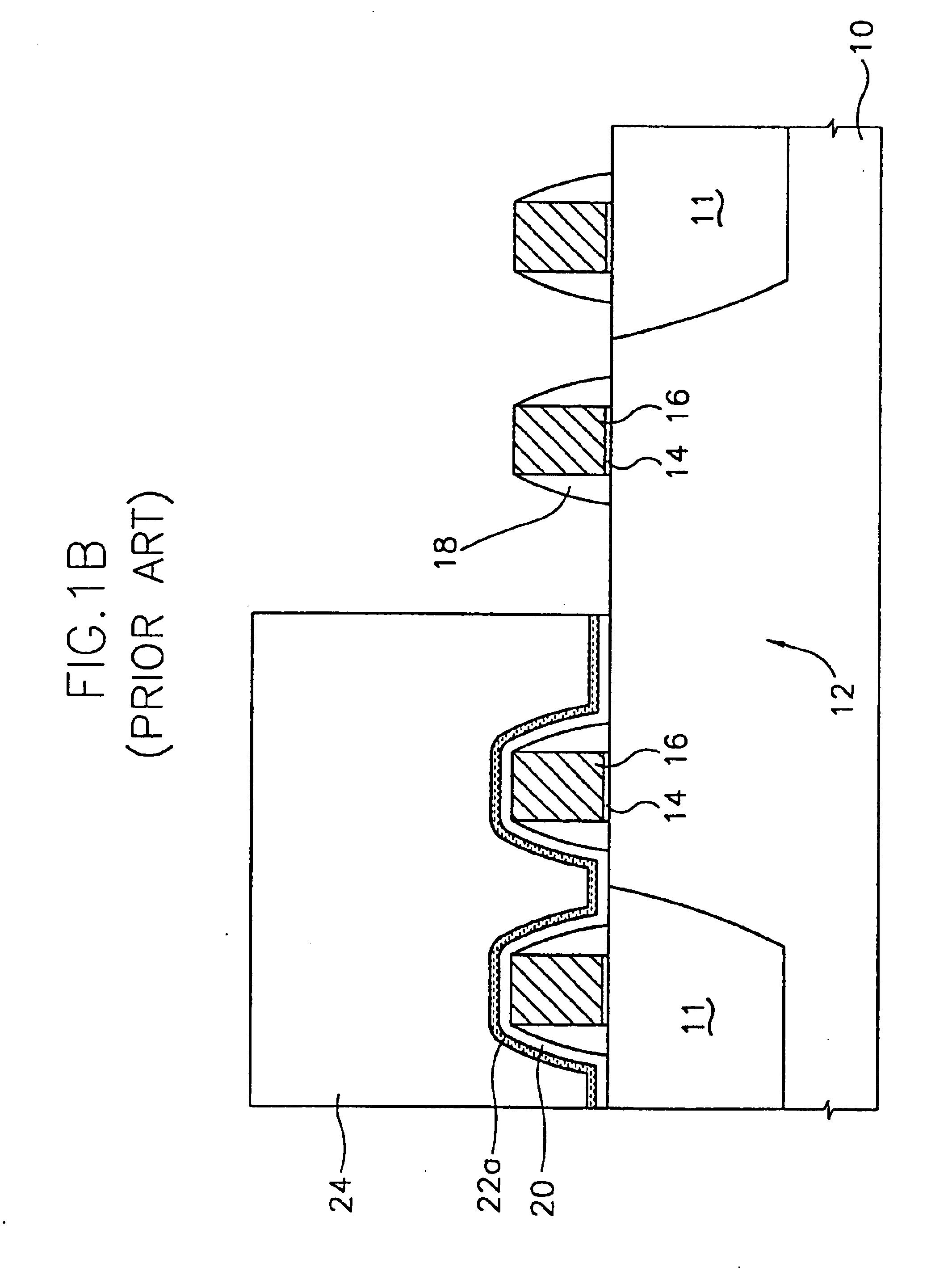Method of forming silicidation blocking layer
a technology of silicidation and blocking layer, which is applied in the field of method, can solve the problems of increasing rc time delay and ir voltage drop, and achieve the effect of preventing diffusion and redistribution of impurities
- Summary
- Abstract
- Description
- Claims
- Application Information
AI Technical Summary
Benefits of technology
Problems solved by technology
Method used
Image
Examples
Embodiment Construction
Hereinafter, the preferred embodiments of the present invention will be described in detail with reference to the accompanying drawings.
FIGS. 2A to 2E are sectional views of illustrating a method of manufacturing a logic device having a silicidation blocking layer according to one embodiment of the present invention.
FIG. 2A shows a step of forming MOS transistors. First, a semiconductor substrate 100 such as a silicon substrate is prepared. Next, a field oxide layer 101 is formed on the substrate 100 by a conventional shallow trench isolation process to thereby define an active region 102 on the substrate 100.
Next, a gate oxide layer 104 comprising silicon oxide (SiO2) or silicon oxynitride (SiON) is formed to a thickness of about 60˜80 Å on the surface of the substrate 100 in the active region 102 enclosed by the field oxide layer 101. A polysilicon layer is deposited to a thickness of about 2000˜2500 Å on the gate oxide layer 104 by a low-pressure chemical vapor deposition (LPCVD)...
PUM
| Property | Measurement | Unit |
|---|---|---|
| temperature | aaaaa | aaaaa |
| temperatures | aaaaa | aaaaa |
| temperature | aaaaa | aaaaa |
Abstract
Description
Claims
Application Information
 Login to View More
Login to View More - R&D
- Intellectual Property
- Life Sciences
- Materials
- Tech Scout
- Unparalleled Data Quality
- Higher Quality Content
- 60% Fewer Hallucinations
Browse by: Latest US Patents, China's latest patents, Technical Efficacy Thesaurus, Application Domain, Technology Topic, Popular Technical Reports.
© 2025 PatSnap. All rights reserved.Legal|Privacy policy|Modern Slavery Act Transparency Statement|Sitemap|About US| Contact US: help@patsnap.com



